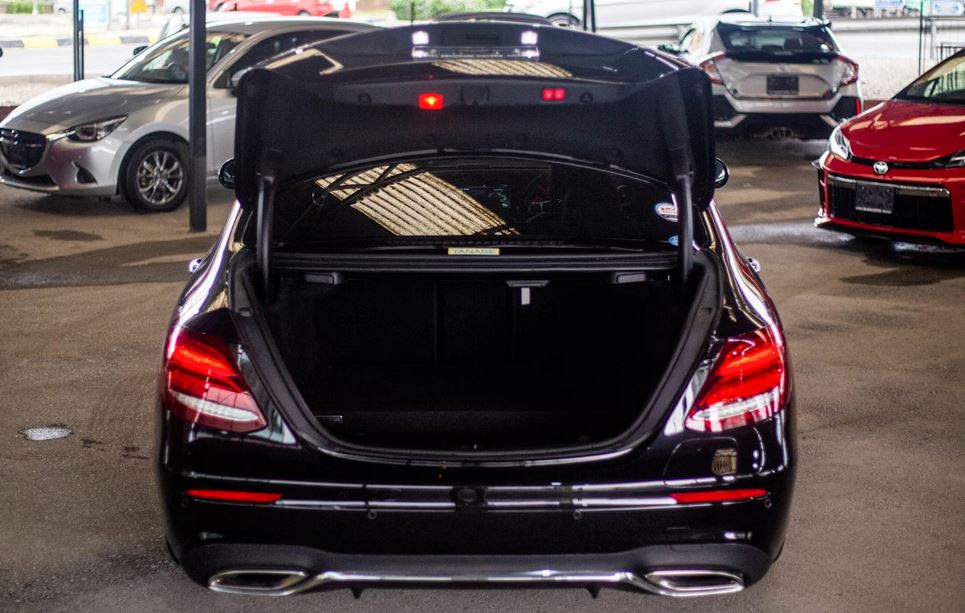Moving a water heater isn’t exactly a fun weekend project, but sometimes you’ve just got to do it.
Maybe you’re replacing an old unit, hauling a new one home from the store, or helping a friend with their remodel. Whatever the reason, you might find yourself wondering if you can just lay this thing down in the back of your truck.
It seems simple enough, right? But water heaters are a little more delicate than they look.
The way you move them can make a big difference in how long they last, and how well they work once you hook them back up.
In this post, we’ll explain if you can transport a water heater on its side.
Can You Transport A Water Heater On Its Side?
No, you should not transport a water heater on its side unless you absolutely have no other option.
These appliances are designed to be stored and moved upright. Laying them down changes how the weight is distributed and puts pressure on parts that weren’t meant to bear it.
That can lead to damage, especially with traditional tank-style heaters.
But again, it’s not totally off-limits. You just need to understand the risks, take precautions, and know how to do it the right way.
If you’ve got a tankless water heater, it’s usually safer to transport those flat. But in this post, let’s focus on the tank-style heaters most people are talking about.
Also Read: Do Water Heaters Need to Be Flushed?
Why You Shouldn’t Transport A Water Heater On Its Side
There are a few reasons pros recommend keeping it upright during a move. These things are heavier and more delicate than they look. Here’s why you shouldn’t transport a water heater on its side:
#1 It Can Crack The Glass Lining
Most water heaters have a glass lining inside the tank. This lining is super important because it protects the metal tank from corrosion.
When you transport the unit on its side, all that weight gets redistributed in ways the glass wasn’t meant to handle. The glass lining can crack under this pressure.

Once it cracks, you’re looking at rust and corrosion problems down the road.
Your water heater might work fine initially, but those cracks will catch up with you eventually.
Also Read: Warning Signs of an Aging Water Heater
#2 It Can Dent The Tank Or Outer Shell
This one’s pretty obvious, but worth mentioning.
When you’re moving a heavy water heater on its side, it’s way easier to accidentally bang it into doorframes, truck beds, or other obstacles.
The tank and outer shell can get dented, which isn’t just cosmetic. Dents can create weak spots in the metal. They might not cause immediate problems, but they can lead to failures later on.
Plus, a dented water heater just looks sad sitting in your utility room.
#3 It Can Shift Internal Insulation Or Baffles
A lot of people don’t realize that inside the tank, there’s more than just water. You’ve got insulation packed around the tank and sometimes internal baffles or channels that help guide the water flow.
These parts are meant to stay put when the unit is upright. But if it’s on its side and takes a few hits during transport, they can shift, collapse, or come loose.
That can lead to hot and cold spots in the water, weird noises, or a drop in efficiency.
It might not be obvious at first, but over time, it’ll wear down how well the heater performs.
#4 It Can Bend Gas Valves, Elements, Or Thermostats
Water heaters have delicate internal components that don’t like being jostled around.
Gas valves, heating elements, and thermostats are all positioned assuming the unit will stay upright. When you tip it over, these components can shift and bend.
A bent gas valve is bad news. It might not seal properly, which could lead to gas leaks.
Plus, heating elements can get damaged and stop working altogether. Thermostats might get knocked out of calibration too, meaning your water temperature becomes unpredictable.

#5 It Can Void The Warranty In Some Cases
Here’s something that might hit you right in the wallet.
Some manufacturers will void your warranty if you transport the unit improperly. They know that sideways transport can cause problems that might not show up immediately.
If your water heater fails six months later and the manufacturer finds out it was transported on its side, you might be out of luck for warranty coverage.
Always check your warranty terms before moving day.
Also Read: How To Fix And Repair The Most Common Water Heater Problems
How To Safely Transport A Water Heater On Its Side
So let’s say your only option is to move the heater lying down. Maybe you’re using a car, SUV, or pickup truck that just doesn’t allow for standing it up.
Here’s how to minimize the risks as much as possible:
- Lay it on the side opposite the control panel
- Wrap it in blankets, towels, or padding to protect the body
- Place it on a flat surface to avoid tipping or shifting
- Strap it down tightly with bungee cords or ratchet straps
- Keep it away from heavy or sharp items that could fall on it
- Don’t stack anything on top of it
- Drive slowly and avoid potholes or rough roads if possible
- Stand it up immediately when you arrive and inspect it for damage before using
That’s pretty much it – keep it cushioned, stable, and supported. Don’t toss stuff on top of it. And if you’re driving a long distance or going over rough roads, go slow and steady.
Treat it like it’s breakable, because it is.
Bottom Line
You can transport a water heater on its side, BUT ONLY IF YOU REALLY NEED TO, and only if you take steps to do it safely.
Laying it down increases the chance of damaging the tank, cracking the internal lining, bending key parts, or even voiding your warranty. It’s almost always better to move it upright if possible.
If standing it up isn’t an option, just lay it gently on the side opposite the controls, wrap it well, and strap it in tight. Once you get where you’re going, stand it up right away, give it a quick inspection, and wait a bit before installing if it’s been jostled around.
Handle it with care and you’ll be just fine.



